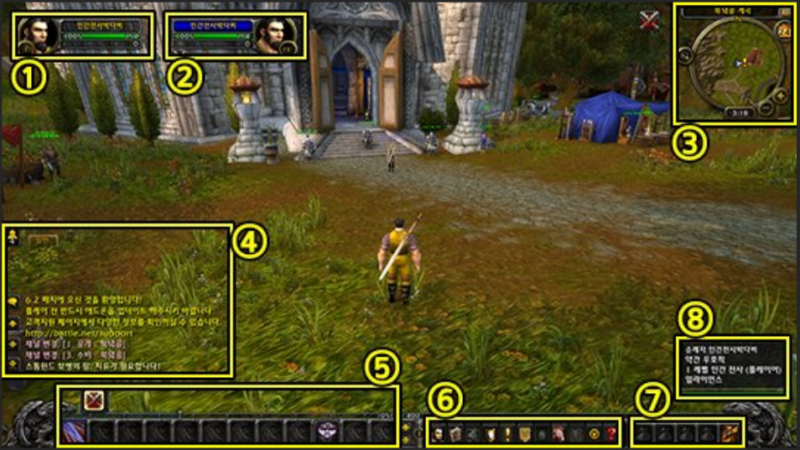
Game localization is divided into text localization and LQAT. In the past, it was common to only localize the text and not consider LQAT. This was in part because securing a development schedule before the release can be difficult, as well as less emphasis was placed on the importance of the quality of the translated text.
However, as time went on, there were significant statistics that showed that a well-localized game increased sales. And as users began to directly request better localization quality, or even just localization, the demand for localization testing, or LQAT, grew. Today, we explore the specific reasons to conduct LQAT.

1. What is a Linguistic Quality Assurance Test (LQAT)
LQAT, or Linguistic Quality Assurance Test, involves playing (testing) the game in order to find and fix linguistic errors. Games have special characteristics that make them different from other types of media (regular documents, video subtitles, webcomics, books, etc.). These are known as “sporadic in-game texts“.
Other types of media usually have the text appearing sequentially. By looking at the surrounding sentences for context, the translation and tone can be easily determined. Games, however, are different. But for genres like stories are straightforward or visual novels, most text will appear sporadically. For extremely complex games like open-world games, this can be even more challenging. In these games, the text does not appear sequentially, due to the nature of the game medium. With a few examples, we look at this issue in more detail.

2. The Specificity Needed In Game Texts
First, let’s look at the text that appears on the screen of an open-world game. When launching an open-world game and looking at the screen, a lot of the text can be seen in multiple places.
- UI text that appears in the upper left corner
- The time appears in the upper right corner (Text files are treated as a “numeric variables”)
- Chat window on the lower left
The text may be on a single screen, but if the assembled text does not have any references, it will be difficult to understand the correct context due to the lack of perspective. This is particularly apparent when it comes to text or a variable tag in the UI, as they are often very short, with one or two words. And, depending on where the text is being used, it’s often natural to translate it differently.
Let’s take a look at a specific example of this.
If, say, there are a lot of characters, you might want to create a variable tag that outputs a rotating list of character names, which then creates a sentence with that variable. This is not limited to character names; it is often used whenever a word is changed in the same type of sentence, such as an item, number, or region.
<Example 1>
- Original Text 1: 드디어 만났군요, <A> 님! (여기서, <A>는 변수임)
- Translated Text 1: We meet at last, Mr. <A>!
- Original Text 2: 게이츠 씨
- Translated Text 2: Mr. Gates
- Output format in game: We meet at last, Mr. Baker. Mr. Gates!
There were no actual issues when solely translating the text. Issues arose when playing the actual game. This was in part because the text translated as “Mr. Gates” was an output of a tag with the variable <A>, something that would be realized during the translation process.
Let’s look at another example.
As you know, consistency in terminology is crucial when it comes to game localization. Displaying the same term with multiple versions of the translation may confuse the user, which may result in a lower rating for your game. This leads us to wonder: Are there times when consistency does more harm than good?
<Example 2>
- In military games, the term “연대” (a type of military formation) was translated as “regiment.” “연대” appears a total of 10 times in the original source.
- Where there is no specified information for each instance, it makes sense to consistently translate it as “Regiment/聯隊/連隊,” depending on the targeted language, for all 10 occasions.
- However, when playing the game, the context of the term “연대” was discovered to refer to several individuals working together or sharing responsibility, signifying “solidarity” (where 연대 is the hanja, 連帶) in that text. When this happens. users will see “Regiment” (i.e. a type of military formation) where the word “solidarity” should appear.
In this example, like the previous one, it all comes down to context. Knowing where, and in what context, the text is being used helps in registering that the same word needs to be translated differently. Unlike other mediums in media, game text often needs to be translated differently depending on where it will be used. And, oftentimes, with the text being in an Excel file without any frame of reference, localization and contextualization is difficult. Therefore, solely translating game text may not be enough for the quality to be considered of good quality.
Lastly, any number of technical issues can arise in a game. Even when the translation is good, the translated content may not be correctly displayed (i.e. errors where there is no text or in a different language.) When it comes to UI, there is a limit on the amount of text it can hold, resulting in texts that spills past the UI (aka Overflowing UI.) These are the types of issues that are unknown until you actually play the game.

3. Concluding Remarks: LQAT is Necessary!
So far, we’ve discussed the nature of texts in the game and why it is hard to achieve solid quality with text localization alone, using specific errors as examples. For the sake of brevity, we’ve only scratched the surface, but there are many more types of errors that LQAT can catch.
Of course, there are some in-game texts that are well-crafted in the development stage. In those cases, more contextual information is given than one might think. They are most likely unique values associated with each text, called “string information” or “key values”, or columns of information to be referenced during the translation process. In practice, it is extremely rare for text to have all this information, and even if it did, it would be nearly impossible for a text-only localization to be produced without a single error in the actual game.
When planning to release a game for global markets, it is known that localization is no longer an option, but a necessity. Users are increasingly demanding better localization quality, and it is statistically noted that localization quality plays a very significant impact on revenue. When aiming to provide the best localization quality, we recommend not stopping at just text localization, but rather, to end strong by using a professional LQAT service . Remember: As the quality of your localization increases, so will your game’s ratings.


